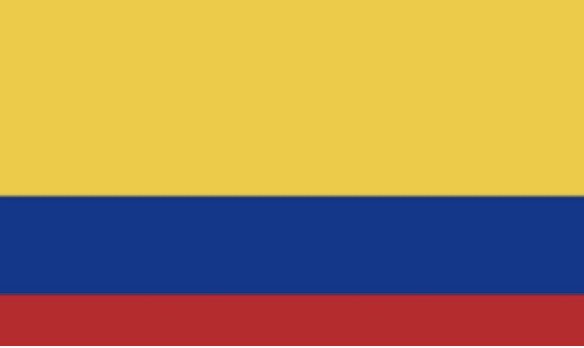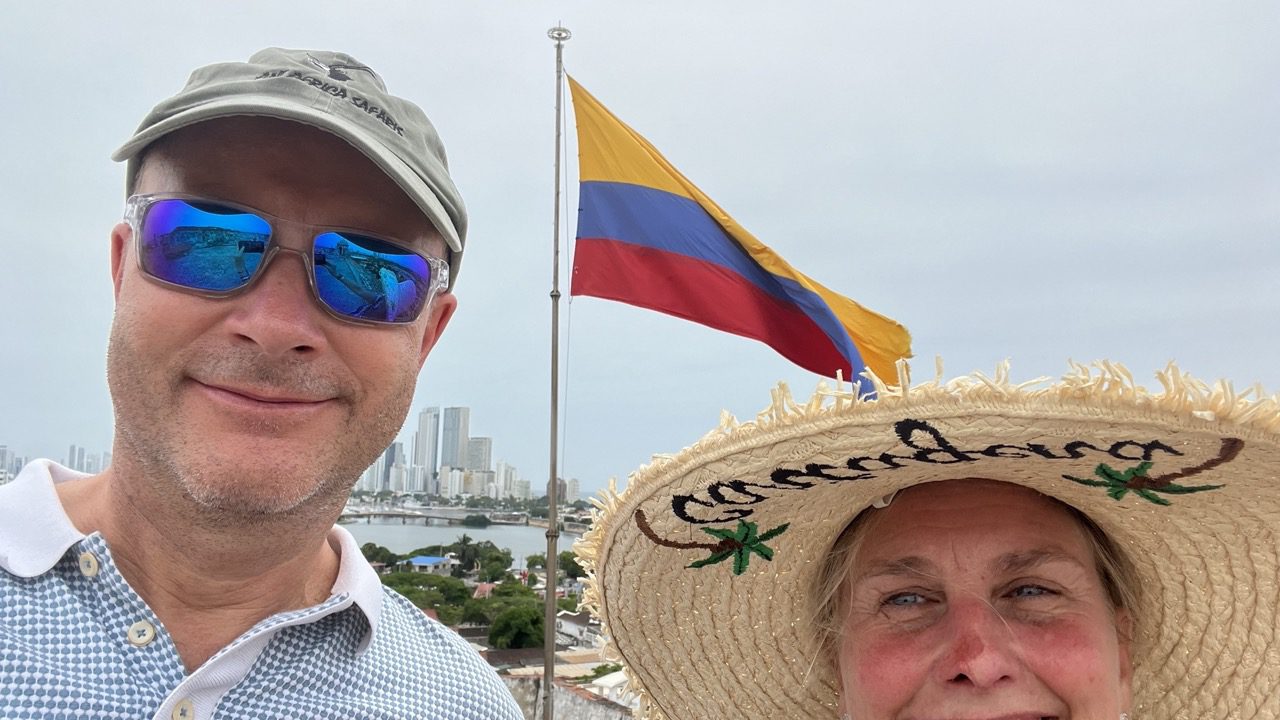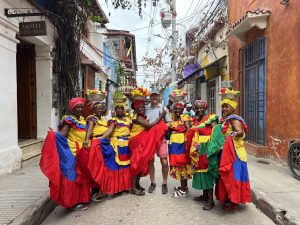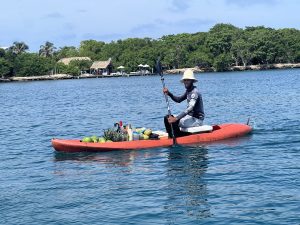🙂 Biodiversity
🙁 Tourist scams
Currency: The Colombian Peso
THREE things we did not know about Colombia:
- Colombia is the Only South American Country With Coastlines on Both the Pacific Ocean and the Caribbean Sea. Colombia has nearly 2,000 miles of combined coastline along the Pacific Ocean and the Caribbean Sea. Both coastlines offer warm, tropical climates, and beautiful beaches. However, each of them has its own unique charm and character. The Caribbean coast cities of Santa Marta and Cartagena have been welcoming tourists for many years. Their beaches tend to have crystal blue water, and white or beige sand. They make great spots for scuba diving, snorkeling, and boating. Santa Marta has South America’s only IGY (Island Global Yachting) destination marina, while Cartagena is home to the largest cruise ship and commercial terminal. More than 3,000 ships pass through the five-berth terminal every year. A few particular highlights of Colombia’s Caribbean coast include the Rosario Islands and Tayrona National Park. The Rosario Islands, one of the 46 Natural National Parks of Colombia, are about a one-hour boat ride out to sea from Cartagena’s old walled city. Although some of the islands are rocky or surrounded by mangroves, many of them are home to stunning, picture-perfect Caribbean white-sand beaches. Tayrona National Park is a 30-minute drive up the coast from the center of Santa Marta. The park covers 58 square miles and is home to several hundred species of birds, mammals, plants, and aquatic life. The Pacific coast is home to the major shipping port city of Buenaventura and eco-travel adventure excursions. The majority of the entire coastal area is rural with a few scattered villages. The beaches along the Pacific Coast have extremely virgin landscapes perfect for hiking. This area is definitely off the beaten tourism path, especially compared to the Caribbean coast. While the beaches are a bit trickier to reach due to fewer flights and difficult roads, you might want to take a trip to visit this area between July and November to experience the majestic humpback whales during mating season. You can also enjoy spending time in an eco-hotel, unplugged from the world as there is no internet or phone service, while you walk along completely pristine beaches with no one else in sight.
- Colombia is the World’s Leading Source of Emeralds Colombian emeralds are considered to be the purest and the most sought-after in the world. Prized for their superior quality and an unlimited variety of green tones, Colombia provides between 70%-90% of the global demand for high-quality emeralds. The eastern range of the Andes mountains, between the states of Boyacá and Cundinamarca, is where most Colombian emeralds are mined. The three major mines in Colombia are Muzo, Coscuez, and Chivor. Muzo continues to be the largest and most influential emerald mine in the world to this date. The name of the mines is also synonymous with the color of the emeralds. Muzo refers to a warm, grassy-green emerald, with hints of yellow, while Chivor describes a deeper green colour.
- Colombia has the Most Orchid Species in the World Colombia has the largest number of orchids in the world, with more than 4,000 different species and 1,543 of which are only found here. The orchid Cattleya trianae, or the “Christmas orchid” is Colombia’s national flower. It was chosen because the combination of blue, yellow, and red colors in the flowers are reminiscent of the Colombian flag. It was named after the prominent Colombian botanist Jose Jeronimo Triana and is most commonly found throughout the country. The reason Colombia has so many species is primarily due to the Andes mountain ranges. They provide a diverse set of environments, including lowland dry forests, wet forests, and cloud forests as well as Paramos (grassland-like environments). Most of the Colombian orchid species diversity are epiphytes (plants that live on the bark of other trees and that depend on the air moist and debris accumulated at branch and boles of trees). In fact, the cloud forests of the state of Nariño in western Colombia hold the record for the place with the highest number of epiphyte diversity in the world. The blooms are produced during the winter and early spring. New growth begins shortly after flowering finishes in the early spring and continues to August, but the flower buds do not start to grow until November. Orchids can survive up to 100 years, and their shape, size, and texture of leaves depend on their habitat. Orchids that live in dry climates have thick leaves covered with wax, while species that live in warm and humid areas have thin, elongated leaves. Some species do not have leaves at all.

Go to: Cartagena
Go to: Rosario Islands



